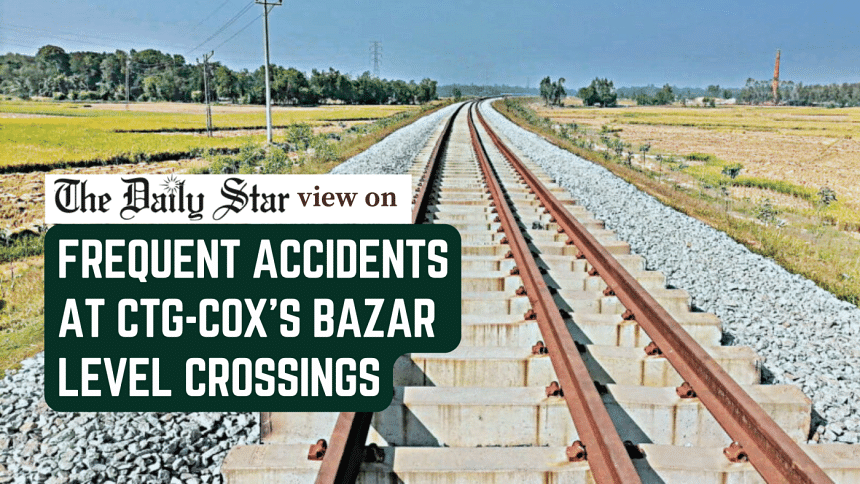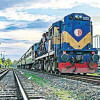Chattogram-Cox’s Bazar level crossings need a safety overhaul

We are alarmed by the recurring accidents and fatalities at the level crossings along the Chattogram-Cox's Bazar rail line. As per data from the Railway Police, 30 people have lost their lives on this route over the past 20 months—17 last year, and 13 so far this year. The latest tragedy occurred on August 2 in the Rashidnagar area of Ramu, Cox's Bazar, when a train collided with a CNG-run auto-rickshaw, killing four people, including three from the same family. These repeated tragedies expose the authorities' utter disregard for public safety. In October last year, an elephant was also killed after being struck by a train.
Partly explaining this cycle of tragedies is the fact that, out of the 72 level crossings on this newly constructed railway, 56 have no gatemen or gates. It is no surprise, then, that accidents continue to claim lives at these points. The level crossing where the latest accident occurred was also unprotected and had no gatekeeper. While local authorities have long been demanding the installation of gates and gatekeepers at these risky crossings, allegedly no action has been taken by the higher authorities. We must ask: why is it taking so long to build gates or barriers and appoint gatemen, which are crucial to curbing such accidents?
Reportedly, in many of these crossings, railway authorities have fulfilled their duty merely by putting up signboards—signs that are often barely noticed or heeded by drivers or commuters. Their disregard for public safety is also evident in the absence of gates or gatekeepers at a level crossing near a school in Lohagara, used daily by students and thousands of other commuters. Some crossings are not even visible from a distance due to sharp bends and dense vegetation, making them especially hazardous.
We urge the authorities to investigate the frequent accidents on the Chattogram-Cox's Bazar rail line and take immediate steps to prevent further loss of life. Gates or barriers must be installed at all crossings without exception, while gatemen must be appointed at those with high traffic flow. Special safety measures must be implemented at crossings located near bends, where approaching trains are difficult to detect until dangerously close. Moreover, people should be made aware of the risks of crossing railway tracks haphazardly and encouraged to use the underpasses, where available, built for pedestrian movement. It is the responsibility of the railway authorities to ensure that rail crossings are safe for all users.


 For all latest news, follow The Daily Star's Google News channel.
For all latest news, follow The Daily Star's Google News channel. 










Comments